What's one in fourteen million? How come Clint's journey feels complete? Why is Thor so happy that Cap is worthy? Previous posts presented more questions than they had answers, now's the time for payoffs!
Note: this is the third and last part of this analysis. If you haven't, I strongly encourage you to read parts 1 & 2 before continuing, as some concepts and symbols described here are properly explained and contextualized in previous posts.For part 1, which examines how the stage was set with Infinity War and Endgame's prologue, click here.
Part 2, which covers the proper first act of the movie and the Time Heist, can be found here.
Before we get to the mother of all catharses, though, we've got some ground to cover.
Don't you ughhh at me, I've prepared pictures this time!
Let's talk about archetypes.
While Sigmund Freud stuck, for the most part, to the more practical medical implementations of psychoanalysis, Carl Jung was beside himself analyzing virtually the entire culture with the assumption that, like a mirror, it would reflect the evolution of the human psyche through time. This led him to conclude that we use what could be crudely referred to as patterns and generalizations, to understand other people and things around us. We also use them to create and process (though "feel" would be a better word) art and narratives.
This will be a vastly simplified take, but one that will serve us well for now: you know how when you look at things your brain processes them, fills the gaps, uses associations, memories and symbols to turn visual signals into something you can make sense of? Cubist artists like Picasso were inspired and fascinated by this process.
Let's crudely (hey, I never said I could draw) visualize it like this:
So, really, anything that we observe undergoes a certain degree of abstraction in our minds. Jung posited that it's not limited to visual features of reality. For instance, let's picture one of the most fundamental, instinctive, most strongly internalized of the archetypal images - the Mother.
This archetype is most often based on one's own parent. However, your mom is definitely not just your mother, right? By this I mean that she's got her own life and other personal qualities and interests that make her image in your mind evolve as you grow older and know her better as another human being.
Someone's mother might thus carry the Mother archetype, but as a person is also a woman, a doctor, likes to joke around and travel.
Yep, those are all archetypes, in a sense. If your mother is the first doctor you know, you will use her image to assess all other healers you meet. Makes sense, right?
Some archetypes are more strongly internalized and associated with a person than others. If you're shown a photograph of your mom, the first thought that will pop into your mind will probably be "mother" as it's the first thing you've known her as and the first thing you've known of the world as a whole.
That is why if you see a woman with a child, you're bound to think of her as a mother before you notice any of her other qualities, and that mental image that began with your own mother will influence your assumptions and attitude towards this person.
This might motivate you, for instance, to let this person have your seat on a bus, even if you wouldn't normally do that because of any of her other qualities (or if you don't know her at all).
The Mother archetype isn't just a static imprint of your mom, though. It evolves as you go through life and apply it in various situations to help your mind make sense of them. The mother that's with you on this hypothetical bus will also influence your mental image of the Mother through the way she acts. You might spark up a conversation that will in some way enlighten you, enriching that archetype and helping you better prepare for when you become a parent yourself.
I hope you enjoyed this digression, I promise you it's going to pay off. Now we can proceed to the main course and complete our analysis, picking up where we left off.
Thanos' glorious return
Let's recap the situation and symbolism behind each character that truly matters (I'm sorry, War Machine and Rocket!).Thanos has blatantly changed his plans, now vowing to destroy the entire flawed universe and create a new one. He went from an anti-villain who believed he could solve our problem in Infinity War to an actual global threat that's pretty earnest in representing our climate disaster.
Hulk gave away his inner beast, castrated his id to always be in control, and then dedicated his strength to unsnap the world. His key influence in the final battle is reminding the heroes they need to repay their debt to the past - basically, he passes to them the Ancient One's teachings on anti-colonialism. Like Ant-man's, his journey is already complete when the finale begins, so they're both on the back seat while others take turns to fight their respective battles.
Tony Stark, finally at peace with himself, sees in Thanos the inevitable punishment for anti-heroic actions. On the symbolic layer Thanos is in the right here, he's the consequence of humanity's narcissism, of our colonial attitude to our planet and, as of Endgame, even to our own past. Iron Man has no faith in victory, his struggle seems to be about motivation. How do you fight a battle you know you're not supposed to win?
Fat-Thor-turned-Woke-Thor swings as hard as he can, but seeing that it's not enough seems to have awakened doubts about his place in the world. He's accepted his own failures and freed himself of the patriarchal imperative to continue in his father's footsteps, but he's unsure of his worth on this brand new path he's embarked on. If you let go of your past to embrace a new future, where do you reach when you need strength?
Cap gives him the answer. Steve Rogers is the pure, noble and altruistic archetypal white male hero who embodies everything that's good about our patriarchal culture. Steve grabbing Mjolnir isn't just a punchline to a long-running joke, it's a symbolic statement - we've been doing lots of things wrong, but you can't deny that some things went right. "I knew it, you're worthy!" Thor's intense joy at seeing this absolutely epic crowning moment of awesome derives from the fact that Cap is showing him a solution to his dilemma. To all contemporary men's dilemma. It's a chest-thumping bit for sure, especially for Americans, but the therapeutic value of this message cannot be overstated. If you want men to give up the privilege they rely on, you need to point them to an alternative source of self-worth, else they will fight back, terrified of their own insecurities.
Seeing the good, altruistic motivations in our past deeds, even if they come from a time we were on the wrong path that's no longer useful, can give us the strength and confidence we need to embark on a new one.
Hawkeye, meanwhile, is running a gauntlet with the gauntlet, as embodiments of his own inner demons follow him. A long, dark corridor with red lighting is symbolic code for the valley of Shadow, a mental space where one's dark archetypes reside, and during his Ronin stint Clint has allowed his darkness to grow strong.
Watch closely now, this is some extremely crafty narrative engineering.
Back when Thanos returned, Hawkeye was picking up the phone to regain his joy, to reach for the reward he does not deserve. Thanos' attack corresponded with the mental reaction to it, it expressed the tension this creeated. Now Clint's running away from demons he himself has brought to life. Even knowing the key spoilers for Endgame I still expected him to at least lose an arm during that struggle, or in some way undergo symbolic death - at this point he had an immense karmic debt to pay.
He emerges unscathed, though, which for a good few seconds grates on my mind. How? What price will he pay?
Enter Nebula.
A woman shackled by Electra complex her entire life. She was robbed of closure and of the small catharsis other heroes went through at the end of act 2 by Thor and Thanos respectively. As she tries to convince her past self to lay down arms and rebel against her abuser we hope for her arc to mirror the one she underwent in Infinity War. Older Nebula knows better, though, and kills her younger self before anyone else is harmed.
In stories featuring time travel a character might kill their older self, symbolizing their choice to never become that version of themselves. Killing your younger counterpart, though, while in the Avengers' brand of time travel doesn't outright erase you, is still a damning deed.
Older Nebula shot first because she knew deep down how this would play out. She accepted the fact that there's no point trying to get closure on her Electra complex and the only way forward is to just kill that part of herself and move on. That act is also admitting that as she was back then, she had no right to live. It's symbolic death.
Now, remember when I told you Clint is connected to Nebula? This connection's made deep in our minds, where characters turn into archetypes as they get split into instinctively identifiable patterns and conflated with others sharing those patterns.
Clint, Thanos, Tony, Ant-man, all have, among their other roles, the function of the Father. There's one thing that all fathers in this movie have in common: they're all defined by their relation with their daughters. Arguably, Iron Man became a symbolic father to Spider-man as far back as Homecoming, but in Endgame we perceive him as a father to Morgan. On the symbolic layer, where the world gets abstracted into archetypal images, all those characters are connected as Father and his Daughter.
Throughout the movie, Clint is portrayed as a father who turned to his dark side after the death of his family, but one consistent feature of this portrayal was his link with his daughter, Lila. Remember the "test run," the baseball glove, whose name Hawkeye was calling and how mere seconds prevented him from prematurely seeing his daughter. This bond has probably been his only quality in this entire film.
Nebula is a daughter whose father kept her in darkness until she was saved by her sister. Her most consistent quality in the MCU is - you guessed it - her relation to her father. The real Nebula, from the default timeline, doing her best to be free of Thanos' dark influence, is a subversion of the Daughter archetype paired with Ronin, the father who gave in to his dark side out of grief for Lila.
Because of her past unflinching loyalty to Thanos, Nebula carries the sins of her father, effectively the burden of all sins of the Father archetype. She kills and rejects her darkest old self while redeeming the new Nebula through this symbolic death.
In so doing, she partially redeemed the Father archetype as well - since her own sins were the sins of the Father - and it's no longer so grating that Clint survived this predicament unscathed. We know how Tony and Thanos repent for this archetype a bit later, but there's even more to it than that.
Think back to the sequence of Hawkeye and Widow climbing to get the Soul Stone. Why did Red Skull greet them with their father's names? In-universe traditions, as fiction facts, are meaningless on their own, the true reason was that it made the script work.
Familial archetypes are among the strongest, the most instinctive and dominant ones. The short dialogue that followed established Nat as a character carrying the archetypal image of the Daughter, one that never even knew her father.
This reframes Hawkeye's entire arc! He's done next to nothing this entire movie. A brooding widower, he's only defined through his relation with his daughter and other women who share her archetype. He's an item, a McGuffin. His story was never about whether through his actions he deserved to have his family back (he didn't), it was about a girl who deserved to have a father.
Nat, who didn't even know her father, sacrificed everything so that Lila wouldn't have to remember hers from photographs.
Nebula, who barely knew who Hawkeye is, made sure that another daughter never faces her problems.
That's why Clint is allowed to have a happy ending. Because of that piece of quantum narrative engineering, the next time his phone rings, he'll be allowed to answer it.
It doesn't get any more crafty than this, but Endgame isn't finished yet, and neither are we. Note the exact shot of the first unsnapped characters joining the battle. Strange opens up portals, heroes arrive at the scene through them, and when the camera is in just the right place Spider-man swings in, steps on top of a rock and takes off his mask.
This is a shot nearly overloaded with meaning in a sequence full of those. Remember what I said about Iron Man's predicament? He realizes their desperate play must have its consequences, that Time Heist had no right to work out, and from this point of view Thanos is truly inevitable, a face of consequence. They stole from the past because they could. If might makes right, though, then Thanos is definitely on the right side here.
That changes with the introduction of Peter Parker into the equation. He's the reason Tony decided to go through with time travel shenanigans in the first place. He symbolizes the ultimate cause to keep fighting against all odds: the next generation.
No matter what transgressions we would have to commit against the structures and rules of our society, no matter the price we have to pay, it's all worth it if we can save our planet for long enough to give our kids a fighting chance.
MCU's entire history: character development perpetually stuck in place throughout the movies that came before, tragedy we were too preoccupied to stop before it was too late, and then a sudden change of heart resulting in a violation of the very fabric of cinema itself - time! - all led us to this moment, to present this message.
Let this sink in for a while.
Two touching reunions later we kick off the relay race with the gauntlet to Ant-man's van on the other side of the battlefield. This time the theme of the battle is responsibility: Banner knows they must return things to their rightful place. At this point, Endgame breezes past our present and starts pointing a path towards the future by having the heroes reverse their colonialism.
This is the moment an equivalent of which Game of Thrones painfully lacked - all major protagonists who each in some way symbolize a part of our real-world society work selflessly together to stop the disaster.
In light of this, the short sequence with Wanda, the most under-utilized Avenger, is vastly profound. She symbolizes what the patriarchal culture was afraid of because it couldn't understand it. Imprisoned, then in hiding all her life, she was driven by the love for her animus, the abstract male construct that was Vision.
Wanda personifies the feminine id.
One of the most underresearched components of the human psyche, one that men fear or live in denial of. It could also be the most important ingredient in saving our planet. I mean, no offense to us dudes, but our real-world equivalent of Tony Stark sells electric cars to rich people and shoots giant phallic symbols into atmosphere as if to impregnate another planet. It's so on the nose that if it appeared in a movie you would call it cheap. It's almost like there is, say, six million years of natural selection that reinforced in us the instincts to conquer, fight and spawn progeny.
To save our environment we need to switch to a more empathic and loving mode of being, one of moderation and ambition realized on the inside, not through limitless expansion. Who better to teach us that if not the 51% of the population that's spent at least a couple thousand years of civilized history as the underrepresented and unprivileged?
Scarlet Witch is secretly the most important Avenger and we can briefly see it in Endgame when she nearly kills Thanos on her own.
A while later, as missiles fall, Strange all but reenacts the iconic movie poster of 2012 in another important piece of symbolic imagery that works to associate Thanos with the ecological catastrophe. This is a post-modern symbol more than an intuitive one, but I figure it still does the job for contemporary moviegoers. The important difference was that the monk from that disaster movie represented our own helplessness in watching the inevitable, Strange instead turns to stop it. It's an important signal from our popular culture - we're no longer fine with sitting idly by, we want to fight for our lives.
In the next sequence Endgame is continuing to show us the path forward. In a tender scene in the middle of a chaotic battle Spider-man is spirited away by Pepper, who carries the Mother archetype (after all, she is Tony's wife). This effortlessly segues into the notorious "girl power" moment of the film.
Now, say what you will about it being unearned or illogical, at this point Endgame is speaking in symbols to show us how we can still have a future. Women and the feminine psyche are all vital in saving the world, a point already made by Luc Besson all the way in 1997 in The Fifth Element. Strangely, it isn't Wanda who takes center stage, though I suspect this sets up sequels where in the female-led Avengers movies the pure and sheltered Wanda - more an idea than a human being - replaces Cap, while defiant and provocative Captain Marvel - arrogant and obnoxious in her acting out against the patriarchal culture - is a somewhat flawed counterpart to her like Tony was for Steve.
And so we're finally getting to the question most people reading this analysis were waiting for: what's one in fourteen million six hundred and five?
The Russos say that this arbitral number has been shouted at a group session in the writers' room.
Whoever did the shouting, they deserve some credit.
We know it's not maths or probability. Tony's a genius and he had five years to figure it out.
This means this number is meant for us, not for him. What does Tony Stark symbolize that would give this figure meaning? Since the gauntlet run basically portrays various parts of our society working together, which vital part is missing that Tony represents?
It's easy to find the answer if you know what you're looking for.
Make sure you don't miss this part:
At the end of 2018, there were estimated to be just over 14 million US$ millionaires or high-net-worth individual (HNWIs) in the world.The wealthiest 1% are reported to own more than a half of our planet right now and are on target to have two thirds of it by 2030. No matter what we do to save ourselves, we can't succeed without their help.
Problem is, you don't get to be among the richest by being helpful. You get there by being crazy ambitious, greedy, and working incessantly to accumulate more and more wealth. The privileged among the privileged would need to go against everything they stand for and against their very nature to help us. They'd need to let go of their ego and material wealth. One could even say they'd need to be ready for a symbolic death. If there was such a person, though, they would be of immense help. The right person with their heart in the right place, just one in fourteen million.
It was never about maths or futures, Tony, it was about you all along, and whether you'd be the one in fourteen million.
"We're going to be okay," says Pepper, assuring Tony in his final moments that his sacrifice will not be in vain. Thanks to him, the rest of the world can now save itself.
Closing notes
The epilogues, the funeral, the reason why Captain Marvel looks so ominous while she's brooding all by herself, why Wanda helps Clint come to terms with what Nat did for him, why Cap hands over America to Sam - those should be obvious questions by now, so I'll let you handle them yourself.Let me take a minute to comment on the only male lead who's emerged from Endgame unchanged: Peter Quill.
In a brilliantly self-aware commentary, his reunion with Gamorra wasn't at all what he expected. Nebula utters the spot-on "it was either him or a tree" that perfectly sums up the depth of their romance. In Guardians movies up to this point, Gamorra was first a token chick the male lead couldn't not get with, and then she had to patiently stand Star-Lord's masculine will-he-won't-he with his Ego, which turned out to also be his father.
Up till now, she was following him around. Now that she's off to have solo adventures, I hope Guardians of the Galaxy 3 will revolve around what Gamorra's up to now that she's left on her own and Quill's journey to accept her and adapt to fit into her life, maturing thusly. Basically, I'm counting on it being a space opera version of Chasing Amy - one that, hopefully, doesn't end in a painfully cringe-inducing monologue.
I love how Thor's growth was played off of Quill on their ship. Back in Infinity War those two went at it with their egos letting off sparks as they clashed. This time, though, it's Lebowski Thor onboard, one who doesn't feel the need to assert his dominance in every sentence. He's definitely the more confident of the two, but it's cause of who he is, not how loud he's talking.
Fellow dudes, my bros, if there's one lesson I wish all of you integrate from this movie, it's this: don't let the normative manly man culture tell you there's anything wrong with talking to the woman inside your head. She helps you grow, allows you to get in touch with your feelings, and develops intuition by reconnecting you with the parts of your mind you don't normally access. The lucky bastards among you that have found your Anima in a woman that loves them - cherish them, talk to them, and don't forget to listen!
It'll make you happier, help you deal with insecurities, and yeah it really does make you ooze that unassuming Keanu-like charisma.
Looking at Endgame as a collective dream, it's obvious that Thor is the dreamer, the lead protagonist of both movies, one that first shows us where we are as a male-dominated society and then leads us out of it. The other characters don't deal that well with the changes in the MCU-world that also reflect our increasingly progressive culture. Each of them, and the values they represent, gets a proper sendoff to grant us closure and deliver catharsis. In this we can find the strength we need to embark on a new path, to let go of our hold on the world and allow it to change. That is why, despite being ostensibly a superhero flick for white dudes, Endgame is a progressive film that can have an enormous influence on its viewers and on our society as a whole.
I mean, Robert Downey Jr. has just established a foundation aiming to clean up the planet, if he was somehow inspired by his MCU counterpart, that's already something.
---
This ends this post series, just in time for me to dive into Refn's Too Old To Die Young as it releases tomorrow. If you read this analysis, don't forget to comment to let me know what you think. Did I overexplain? Were there not enough drawings? Do my GIFs suck? I won't know till you tell me!
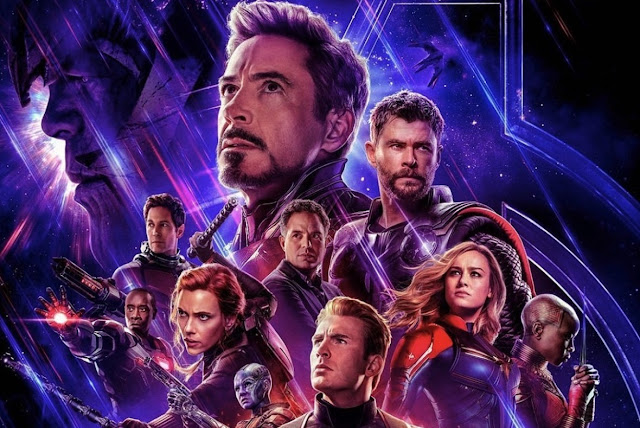



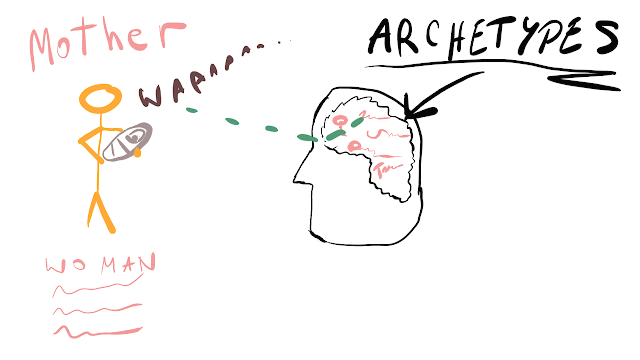

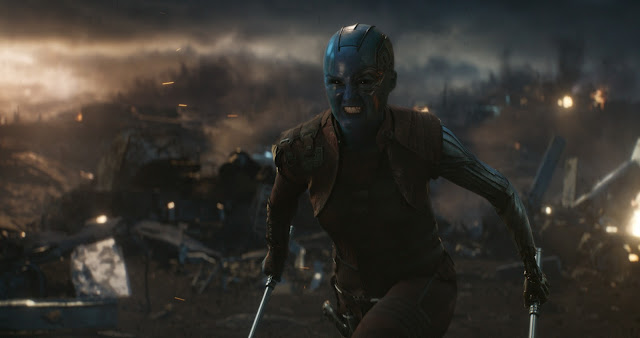

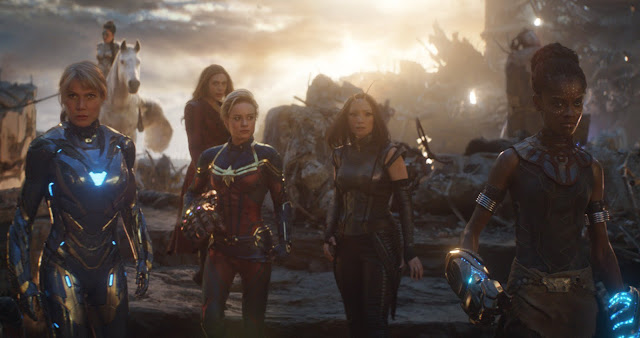

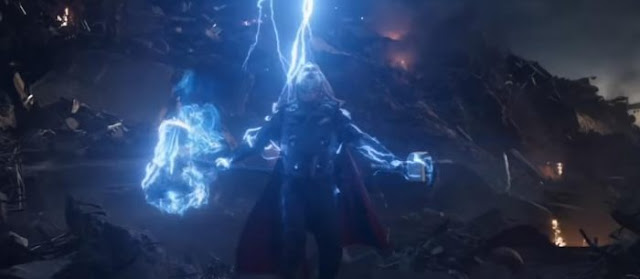
Comments
Post a Comment
Thanks!